Part 1: 1917-1950
The Eppinger Dardevle is arguably the most famous wobbling spoon in the angling world. Whether its success stems from a perfect blend of form and quality or from brilliant marketing doesn't matter - the bottom line is that it has always been a fish-catching machine. For over a century, the Dardevle has held its place in nearly every angler's tackle box. Its effectiveness, reliability, and quality have kept fishermen reaching for the genuine article, even as thousands of cheaper imitations have flooded the market.
Many iconic lures have undergone significant changes over the years. Legends like the Acme Kastmaster, Little Cleo, Johnson's Silver Minnow, and Sprite are now manufactured in Asia, with altered shapes, weights, and finishes. But the Dardevle has remained virtually unchanged. Like at the dawn of the last century, it's still crafted by a small family company in Detroit (well, almost), where Lou Eppinger's descendants continue his legacy.
The history of the company over the past century is well-documented in an article by renowned collector Terry McBurney, published in 2007 in the National Fishing Lure Collectors Club Magazine. You can read it on the Eppinger website. It's a fascinating read that I highly recommend. In this article, however, we'll focus on the evolution of the standard 1 oz (28 g) spoon. This was the first mass-produced Dardevle and the foundation for all other members of the series: Dardevle Imp, Dardevlet, Huskie Devle, Dardevle Midget, Dardevle Spinnie, Huskie Jr., Troll (Koho) Devle, Lil Devle, and Dardevle Skitter.
This article isn't just a list of historical facts. It's the result of examining hundreds of Dardevle specimens and poring over a wealth of historical materials from open sources. If any readers have information about inaccuracies in our conclusions or additional information, photos, or scans, please let us know at [email protected].
According to company lore, Lou Eppinger began fishing with a 2 oz prototype of what we now know as the Dardevle in 1906. After a decade of experimentation and refinement, he decided to start mass production. The lure was initially called the Osprey, made from brass and copper, and available in several color patterns. While the famous red and white stripes were among them, the black and white version was actually the most popular at the time.
The Osprey spoons were rebranded as Dardevle in 1919, so any serial specimens stamped with "Osprey" were manufactured between 1917 and 1918. By the time of the name change, the lure was already quite popular in Detroit. Its design, size, and main color combinations were well-established, so Dardevles produced up until the 1950s were exact copies of the last Ospreys.
Standard Osprey, circa 1918
Pictured here is a standard production Osprey. It weighs in at 1.0 oz (28.3 g), measures 3.57 in (90.8 mm) in length, has a maximum width of 1.13 in (28.7 mm), and is 0.06 in (1.45 mm) thick.
While this spoon is considered the first mass-produced model that spawned all Dardevles, our collection includes another Osprey specimen that suggests the production model underwent at least one change during its 1917-18 run. This lure is made of copper, has slightly smaller dimensions and weight, and features a different stamp. Like the standard Ospreys, the stamp contains only two words, but the letter shapes and stamping quality differ.
Earliest Osprey, circa 1917
Unlike the standard Osprey or early 20th century Dardevle, this spoon is slightly narrower and lighter. It weighs 0.89 oz (25.1 g), measures 3.56 in (90.4 mm) in length, and has a maximum width of 1.09 in (27.6 mm).
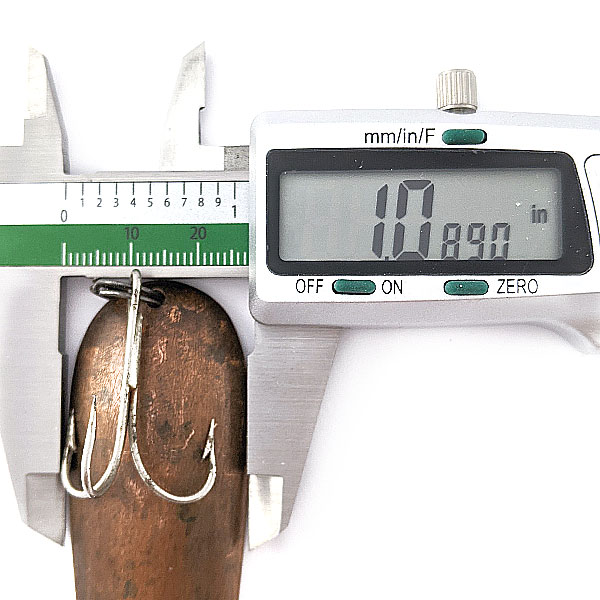
In Terry McBurney's article mentioned earlier, there's a photo of an Osprey collection (now housed in the Eppinger Museum in Dearborn), as well as a separate photo showing an "OSPREY" DETROIT stamp. The details of this stamp - letter placement, uneven impression depth, etc. - match the stamp on our lure. The differences between this specimen and standard Ospreys/Dardevles, along with the stamp's similarity to the museum piece, suggest that this is one of the very first Ospreys, produced in extremely limited quantities. We might be looking at a lure that Lou Eppinger himself held!
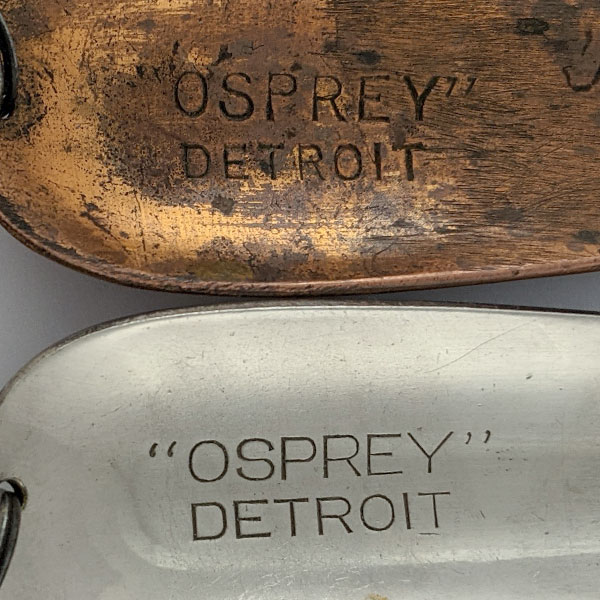
Comparison of Osprey stamps from two versions
We believe that this slightly sub-1 oz Osprey was Lou Eppinger's first commercially successful lure. When he became confident in its future success, he created a more aesthetically pleasing stamp and new molds, bringing the lure's weight to exactly 1 oz.
Alongside the 1 oz Osprey, Lou Eppinger also produced a version half its weight called Sam Wood's Special. Its shape, length, and width match the regular Osprey, but it's made from thinner metal - 0.03 in (0.77 mm).
Osprey Sam Wood's Special, circa 1918
Both of our Osprey Sam Wood's Special specimens - brass and nickel - weigh 0.58 oz (16.4 g). They both feature a lacquer coating on the back side.
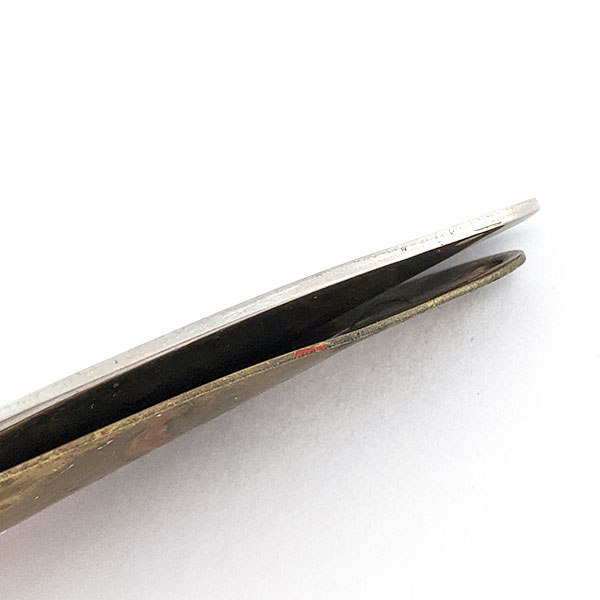
Thickness comparison of standard Osprey and Sam Wood's Special version
In 1919, the lure was renamed Dardevle, and it remained unchanged until World War II. Interestingly, the most popular color patterns for Ospreys and early Dardevles were black and white. Most Eppinger lures that have survived to this day sport these colors.
Typical Dardevle from the 1920s-1930s
The lighter Sam Wood's Special continued to be produced for a short time after the name change to Dardevle. Terry McBurney mentioned that light Dardevle Sam Wood's are referenced in Eppinger brochures from the early 1920s, but among hundreds of old Dardevles we've examined, we've yet to come across such a specimen.
During World War II, due to the defense industry's demand for non-ferrous metals, Eppinger was forced to manufacture lures from whatever was available - namely, rust-prone steel. There's no doubt that anglers were less than thrilled with this change, but these "wartime" lures had no other differences from the first Dardevles. Understandably, few of these lures have survived to the present day, and finding a specimen in good condition is quite a challenge.
Dardevle from World War II era, early 1940s
Our Dardevle from this period has suffered greatly from corrosion. Previous owners attempted to remove the rust mechanically, so the lure's stamp isn't as clear as on earlier or later Dardevles.
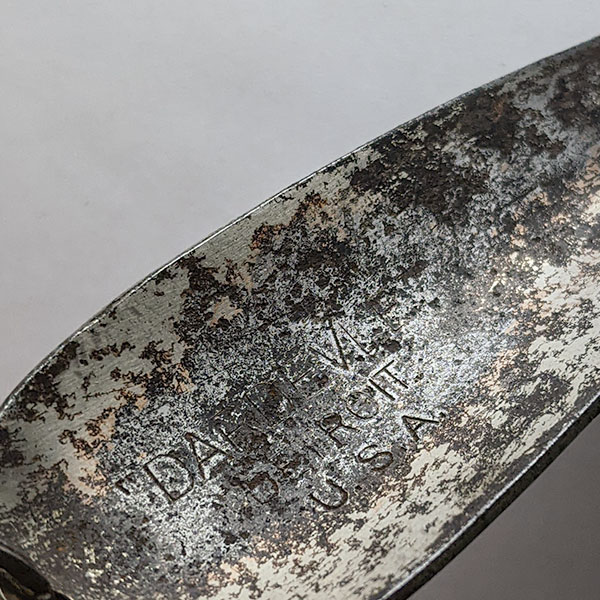
Stamp of a "wartime" Dardevle
However, everything else apart from the material - dimensions, weight, paint, and stamp - matches both earlier and post-war Dardevles perfectly.
In the 1940s, Eppinger changed their painting technology. Thanks to the use of new materials or tools, the coating became more uniform and durable, and the use of templates made the lines sharper.
Post-war Dardevle
Interestingly, despite the nominal weight of 1 oz (which was the true weight of the last Ospreys), the actual weight of Dardevles from the first half of the 20th century was slightly less. The four specimens we have on hand at the time of writing are all a bit lighter than 1 oz:
- Black and white stripes, copper - 0.87 oz (24.8 g)
- Red and white stripes, nickel - 0.95 oz (26.9 g)
- Black and white stripes, nickel, "wartime" - 0.86 oz (24.3 g)
- Black and white stripes, nickel, post-war - 0.87 oz (24.8 g)
This difference is due to the slightly thinner metal used in the Dardevles. It's also worth noting that, to the touch, our 1 oz Osprey seems to have a thicker layer of nickel.
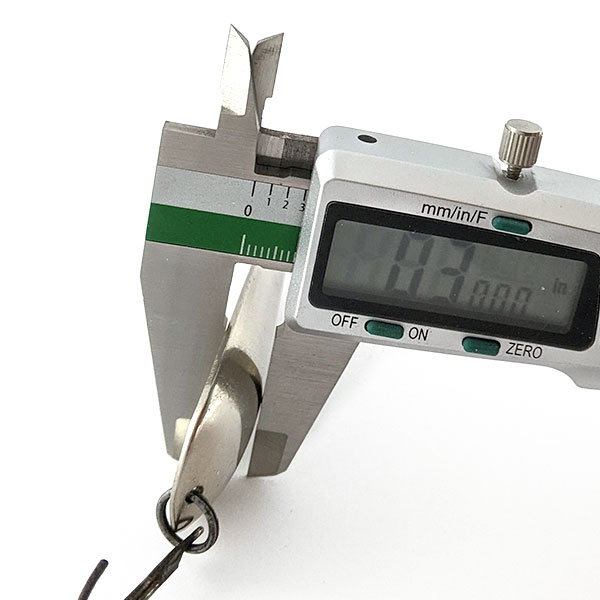
Convexity of early Osprey/Dardevle spoons
All the lures presented in this article have the same convexity. If you place these spoons without hooks on a table, their highest point will be about 0.3 in (7.5 mm) above the surface.
The 1950s would bring new changes to the Dardevle, making the famous spoon even better - transforming it into the lure we know today. We'll dive into those developments in the second part of this article.



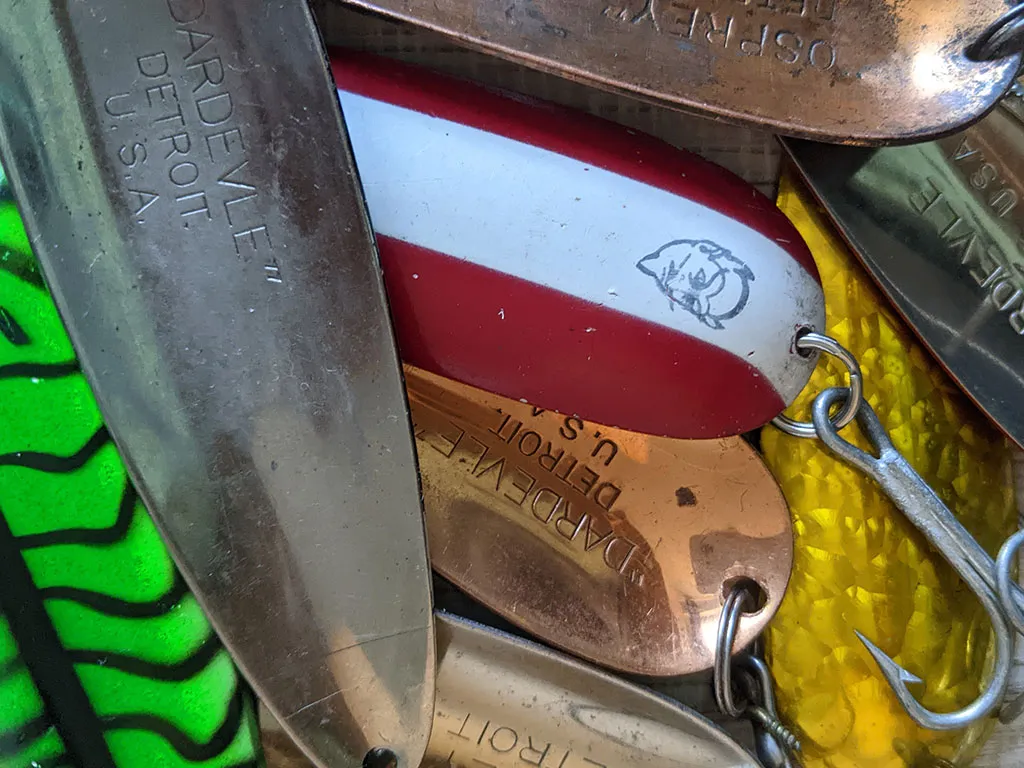
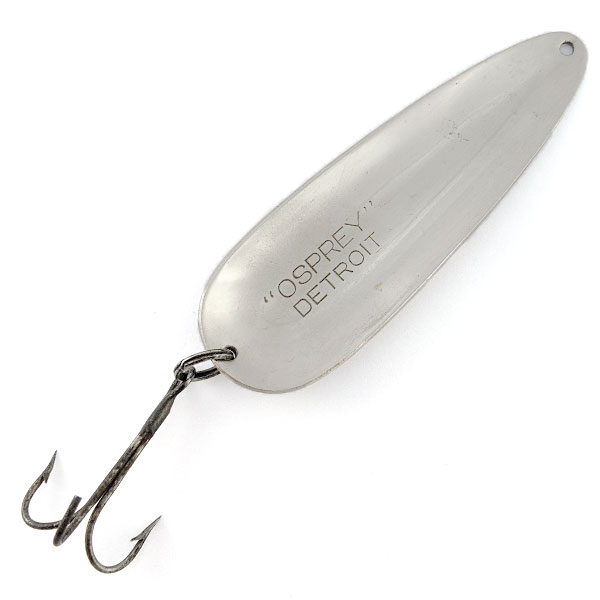
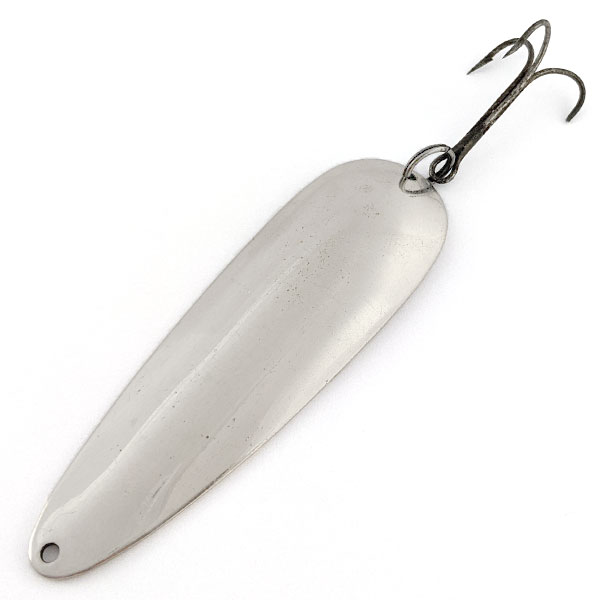
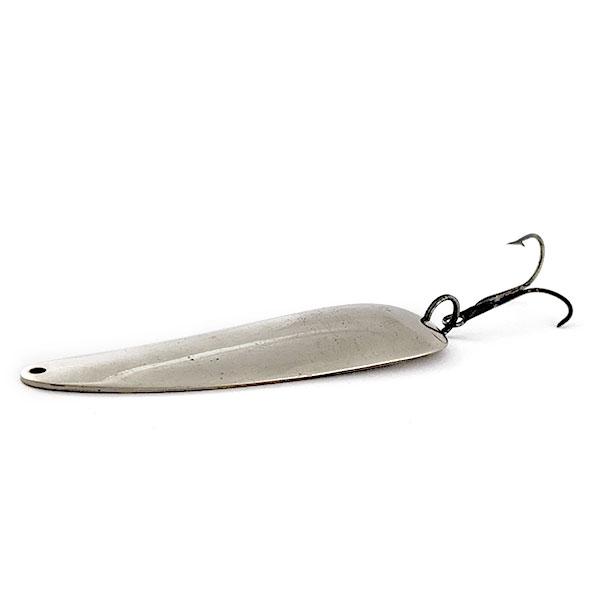
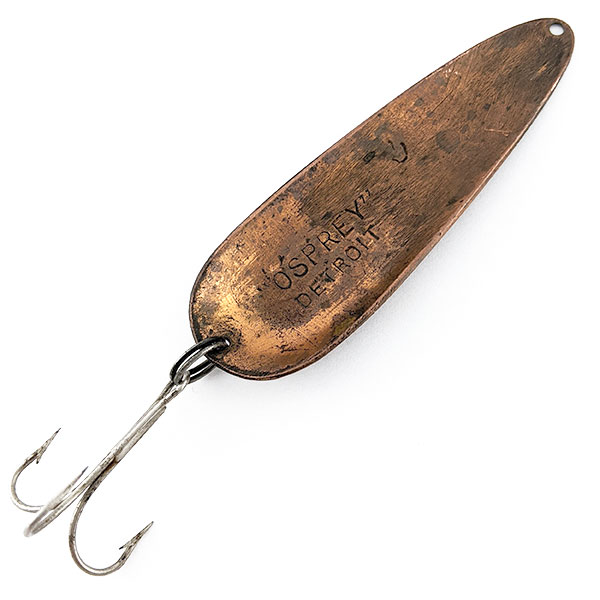
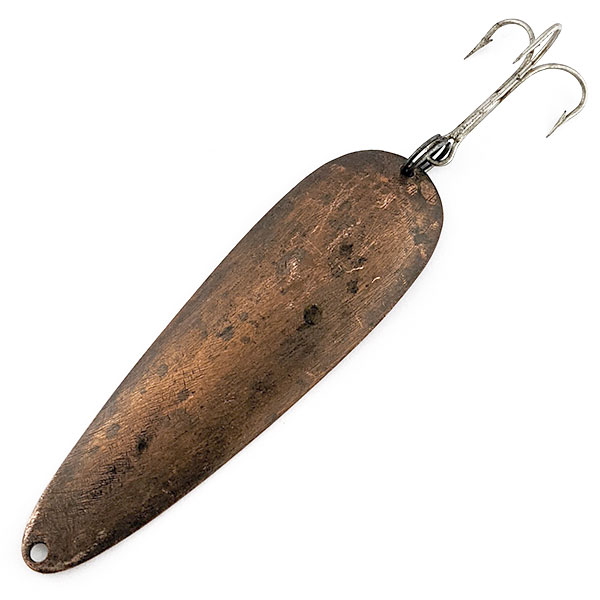
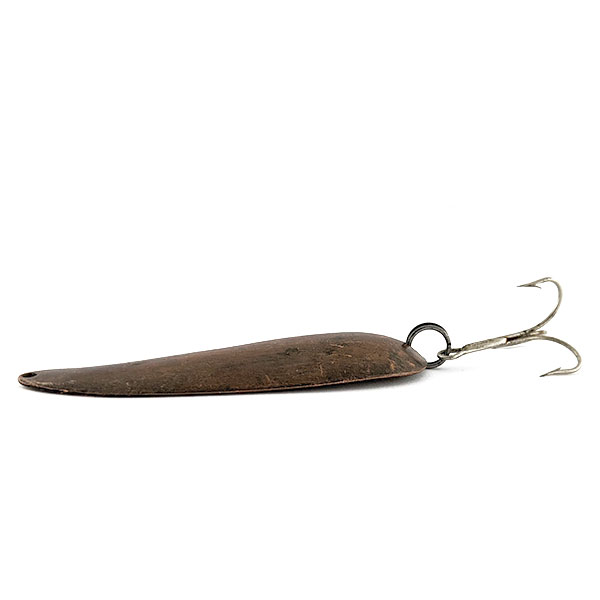
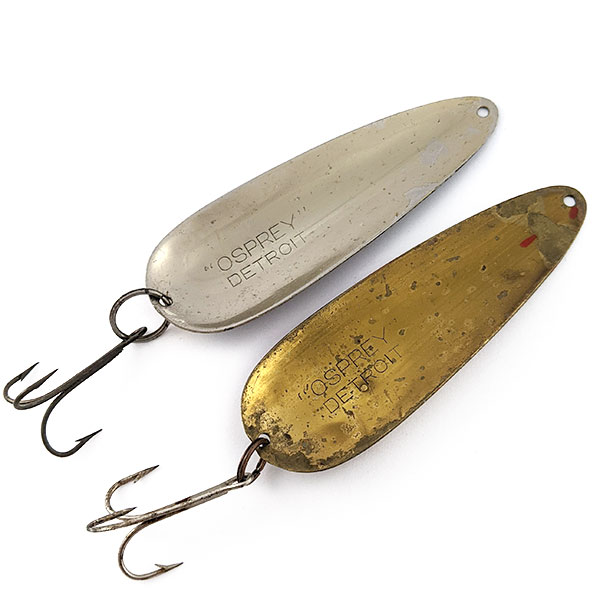
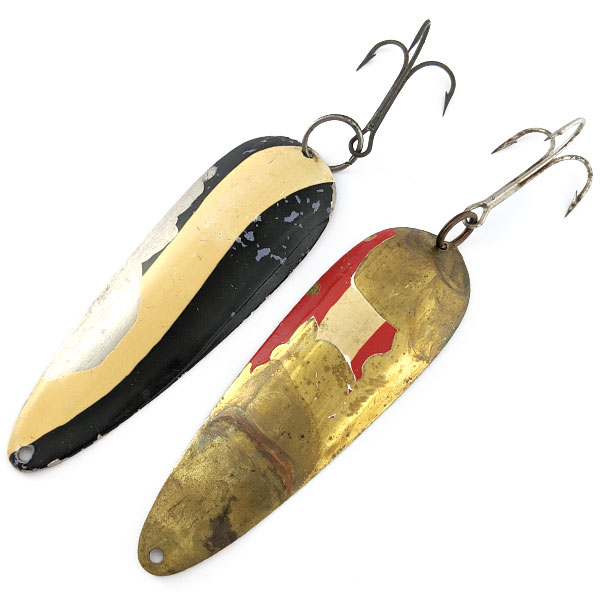
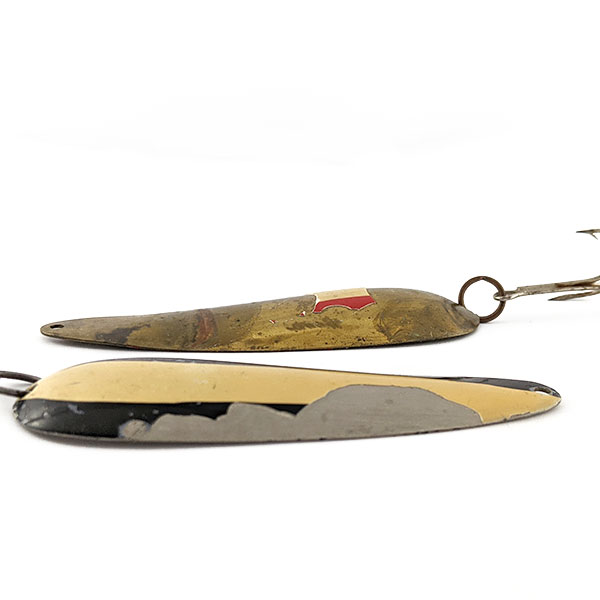
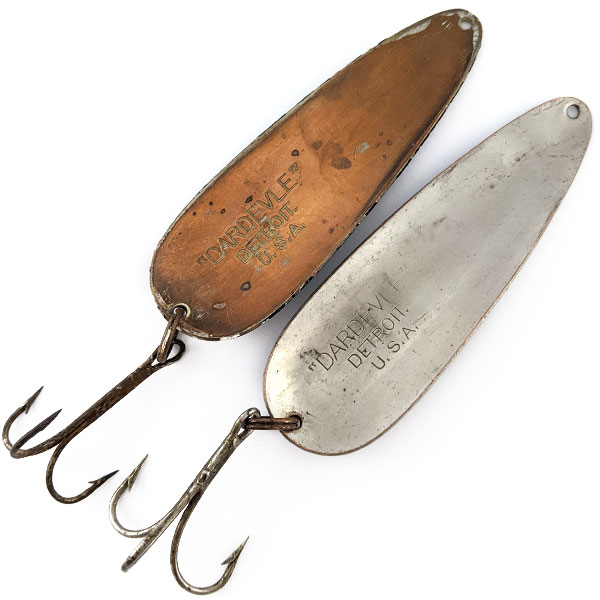
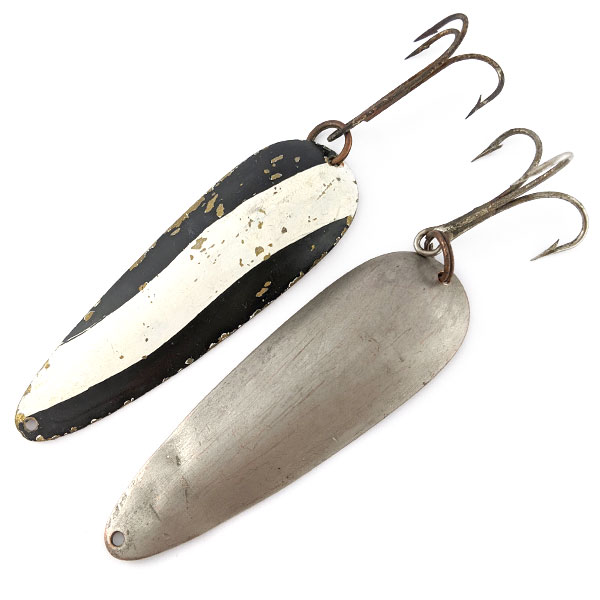
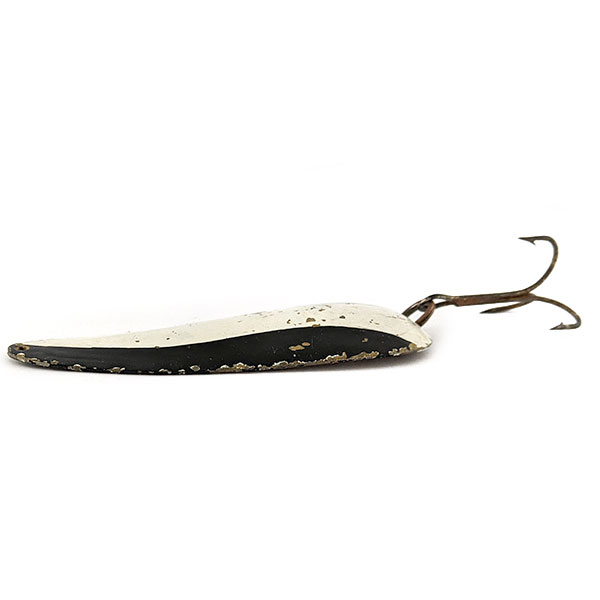
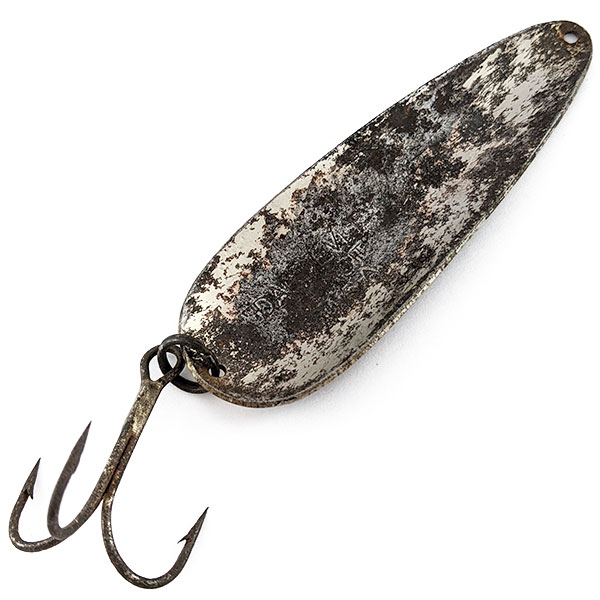
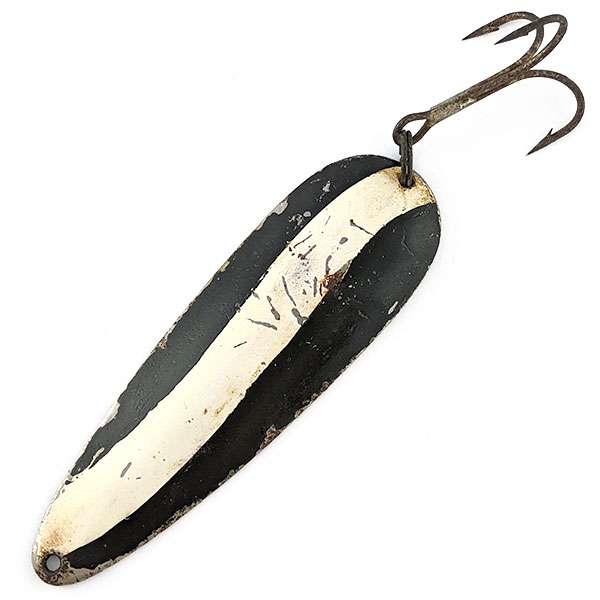
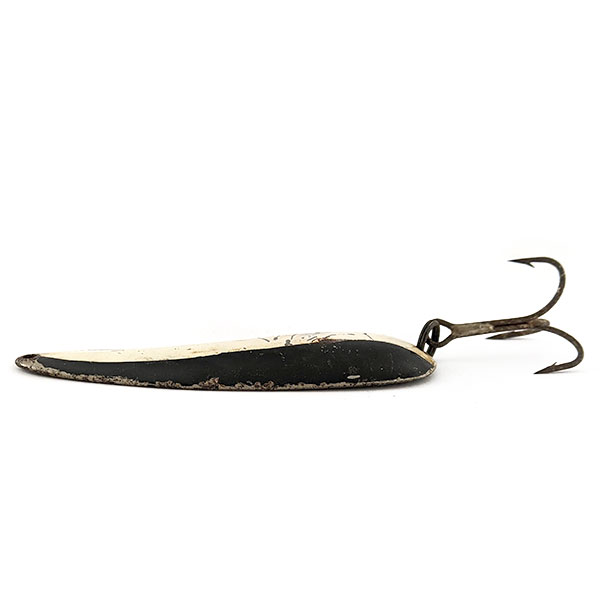
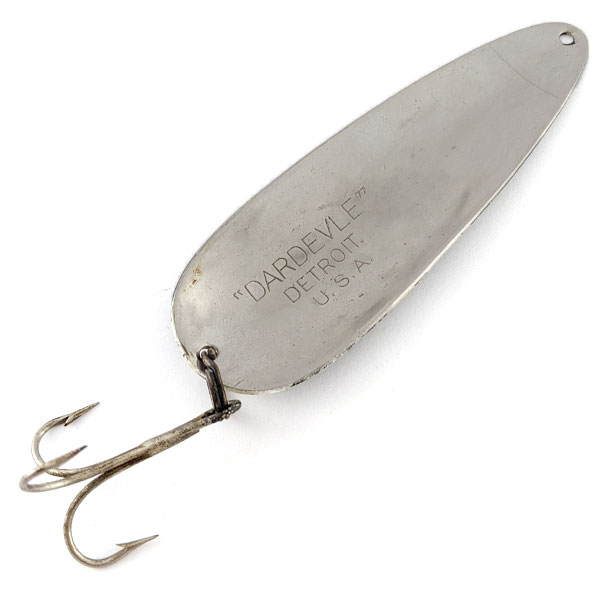
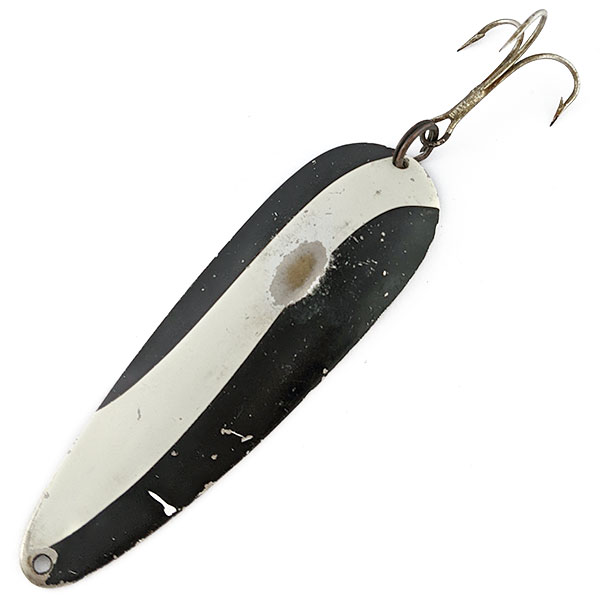
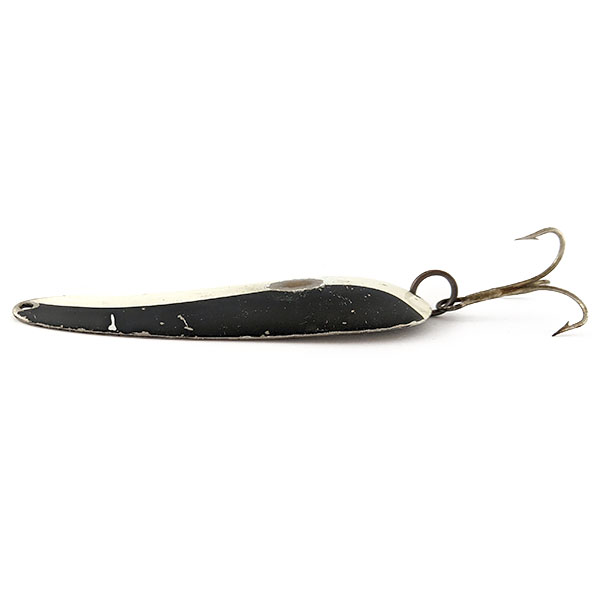
74 Comments
Feb 16, 2025
kjb.kjjk;vkjv